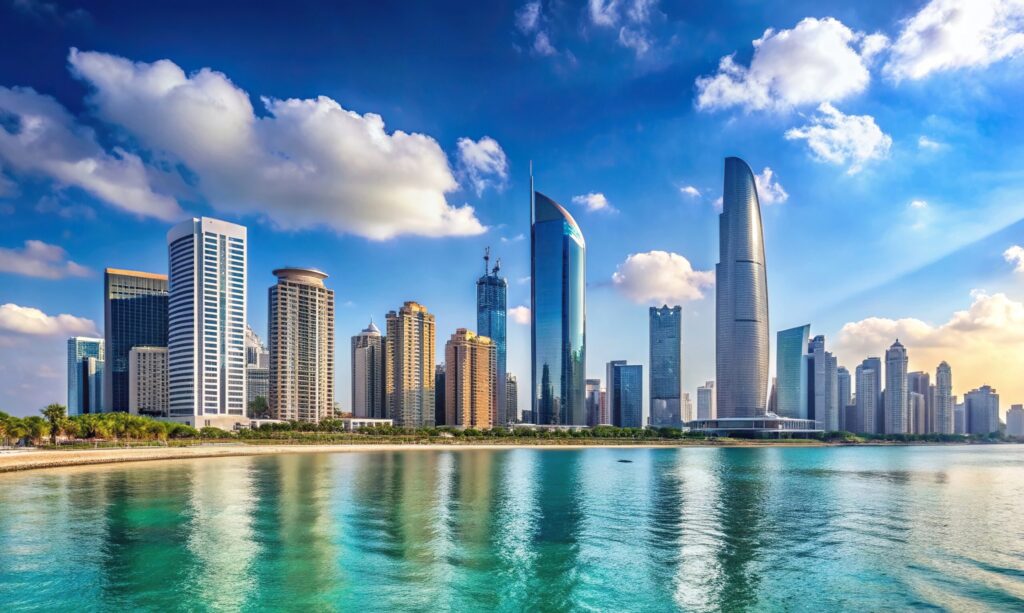How the UAE and Saudi Arabia are redefining global tourism competitiveness
Executive Snapshot
The World Economic Forum’s Travel & Tourism Development Index (TTDI) 2024 reveals a dynamic and evolving global tourism landscape. While many countries are rebounding post-pandemic, a few are actively reshaping the fundamentals of destination competitiveness. Among them are Gulf Cooperation Council (GCC) nations—particularly the United Arab Emirates (UAE) and Saudi Arabia—who stand out for their transformative approach to policy, investment, and experience design.
The UAE ranks 18th globally and leads the MENA region, while Saudi Arabia jumped nine places to 41st—the second most improved high-income economy. Their performance highlights a broader opportunity: the GCC can reposition itself as a unified, high-performing, and sustainable tourism bloc. But closing the gap between vision and execution, particularly for Qatar, Bahrain, Oman, and Kuwait, will require strategic alignment, human capital development, and regional collaboration.
Global Trends: Recovery with Rising Complexity
The TTDI 2024 marks a return to near pre-pandemic travel volumes, with tourism contributing $9.9 trillion to global GDP. Yet, this recovery has been uneven. Advanced economies have strengthened their lead with robust infrastructure, openness, and innovation, while developing countries continue to grapple with lagging institutional readiness and fragmented investment.
A notable trend is that tourism demand is now outpacing supply. Travelers are eager to explore again, but capacity constraints in aviation, accommodation, and workforce readiness are creating service bottlenecks. At the same time, the report flags declining sustainability scores, particularly around seasonality management, resource use, and climate preparedness—highlighting the tension between recovery and long-term viability.
UAE Strategy, Scale and Smart Tourism
The UAE has emerged as the regional benchmark for tourism competitiveness. Its top-20 global ranking reflects a long-standing focus on infrastructure excellence, digital transformation, and strategic urban planning. The country’s strengths are rooted in its world-class aviation networks through Emirates and Etihad, high ICT readiness, and a portfolio of global attractions such as the Museum of the Future and the Louvre Abu Dhabi.
These assets are reinforced by long-term plans like Dubai’s 2040 Urban Master Plan and Abu Dhabi’s Vision 2030, which integrate tourism as a key enabler of economic growth, cultural capital, and liveability. The UAE has also taken visible steps toward sustainability, including green hotel certification programs, nature-based tourism developments, and carbon-conscious transport policies.
Despite these achievements, several gaps persist. The UAE must address challenges related to affordability, seasonality, and limited domestic workforce participation in the tourism sector. To maintain its lead, it will need to deepen labour inclusion, scale sustainability outcomes, and continue diversifying its tourism offerings beyond leisure and luxury.
Saudi Arabia is Scaling a Bold Vision
Saudi Arabia’s rise in the TTDI is one of the most significant shifts in the index. Through Vision 2030, the Kingdom is rapidly evolving from a nascent tourism player to one of the most ambitious globally. Its tourism transformation has been driven by institutional reforms, visa liberalisation, and unprecedented investment in heritage, culture, and infrastructure.
The launch of mega-projects such as NEOM, the Red Sea Project, Qiddiya, AMAALA, and AlUla demonstrates a bold attempt to create entirely new tourism economies from the ground up. These projects are complemented by domestic tourism campaigns, hospitality training institutions, and major upgrades to airports and mobility networks.
Yet the pace of growth brings new pressures. Saudi Arabia still lags in areas such as gender inclusion, service delivery, and ICT integration. Managing international perception, ensuring cultural sensitivity, and building operational capacity at scale will be critical to delivering on its long-term promise.
Divergent Paths of Qatar, Bahrain, Oman, and Kuwait
Beyond the UAE and Saudi Arabia, other GCC countries are experiencing more mixed progress. Qatar, ranked 53rd, is adapting to a post-World Cup environment with exceptional infrastructure but limited diversification beyond sporting mega-events. Bahrain, at 58th, benefits from ease of access and liberal regulation, but lacks destination scale and visibility. Oman, ranked 67th, has strong eco-tourism fundamentals but faces structural bottlenecks in marketing, openness, and institutional capacity. Kuwait, in 96th place, continues to struggle with sector prioritisation, tourism services, and international appeal.
These countries share some common barriers. They often underutilise cultural and natural assets, lack coordinated branding strategies, and face gaps in labour skills and sector-level governance. Without sustained reform and greater alignment, these destinations risk falling further behind in a highly competitive global tourism arena.
Five Regional Imperatives for GCC Tourism Competitiveness
To transition from high-potential to high-performing, the GCC must adopt a coordinated and future-focused tourism agenda. A unified GCC tourism strategy—ideally facilitated by a dedicated intergovernmental body—would allow for shared goals, standard-setting, and joint promotional efforts. Implementing a common tourist visa scheme would significantly simplify regional travel and encourage multi-destination itineraries across member states, thereby increasing both the length of stay and visitor spending.
Another critical lever is human capital. Tourism education, vocational training, and inclusive employment policies should be scaled to build a resilient, customer-centric workforce. Attention must also shift toward environmental responsibility. Regional adoption of sustainability frameworks, coupled with incentives for green infrastructure and low-impact tourism models, would align the GCC with global ESG expectations.
Finally, digital leadership is within reach. By leveraging their existing ICT capabilities, GCC countries can pioneer smart tourism platforms, invest in AI-driven insights, and create region-wide data ecosystems to enhance experience delivery and destination planning.
Sustainability and Inclusion – The Missing Link
Despite progress in infrastructure and policy, the GCC’s performance in sustainability and labour inclusion remains below global benchmarks. Few countries have achieved measurable progress in areas like emissions reduction, biodiversity conservation, or visitor distribution. While initiatives like Dubai’s Green Tourism program and the regenerative design of the Red Sea Project signal intent, they are not yet systemic or regionally coordinated.
Equally concerning is the persistent underrepresentation of women and nationals in tourism employment. Tourism cannot fulfil its promise as a pillar of diversification without inclusive hiring, fair labour practices, and professional development pathways. Nationalisation strategies must be coupled with efforts to raise the status of tourism as a career, improve job quality, and support emerging entrepreneurs, particularly in the cultural and creative economy.
The Digital Edge: Smart Tourism as a Strategic Advantage
Digital transformation represents a major strength and opportunity for the region. The UAE and Saudi Arabia are already developing immersive visitor platforms, using AI in destination management, and piloting virtual tourism through the metaverse. Meanwhile, Abu Dhabi is applying big data for planning and visitor flow optimisation.
However, other member states lag in applying digital tools across the tourism value chain. A GCC-wide approach to digital tourism—focusing on SME enablement, cross-border platform interoperability, and digital skills development—would unlock significant shared value.
From Momentum to Maturity
The TTDI 2024 shows that momentum is no longer the issue. The real test for GCC tourism lies in moving from rapid growth to resilient, inclusive, and sustainable maturity.
The path forward requires:
- Shared regional branding and market positioning;
- Long-term investment in people, not just projects;
- Metrics that go beyond arrivals to measure value and impact;
- Strategic alignment between ministries, investors, and destination managers.
The UAE and Saudi Arabia have laid the groundwork. The challenge now is to uplift the region as a whole and to lead not just in tourism growth, but in tourism governance and foresight.
Endnotes
- World Economic Forum. (2024). Travel & Tourism Development Index 2024: Rebuilding for a Sustainable and Resilient Future. World Economic Forum in collaboration with the University of Surrey. Retrieved from https://www.weforum.org/reports/travel-and-tourism-development-index-2024/
- World Travel & Tourism Council. (2024). Economic Impact Research. Retrieved from https://wttc.org/
- UAE Government Media Office. (2023). Dubai 2040 Urban Master Plan. Retrieved from https://mediaoffice.ae
- Department of Economy and Tourism (Dubai). (2023). Dubai Sustainable Tourism Guidelines. Retrieved from https://www.dubaitourism.gov.ae
- Vision 2030 Kingdom of Saudi Arabia. (2024). Vision Realization Programs: National Tourism Strategy. Retrieved from https://vision2030.gov.sa
- Saudi Tourism Authority. (2024). Saudi Tourism Sector Progress Report. Retrieved from https://sta.gov.sa
- Abu Dhabi Department of Culture and Tourism. (2023). Sustainability in Tourism Framework. Retrieved from https://dctabudhabi.ae
- UN Tourism. (2023). Measuring Tourism Sustainability. Retrieved from https://www.unwto.org/sustainable-development
- Red Sea Global. (2024). Sustainability at The Red Sea. Retrieved from https://www.redseaglobal.com/en
- Dubai Department of Economy & Tourism. (2024). Tourism KPIs and Smart Tourism Strategy. Retrieved from https://www.dubaidet.gov.ae





